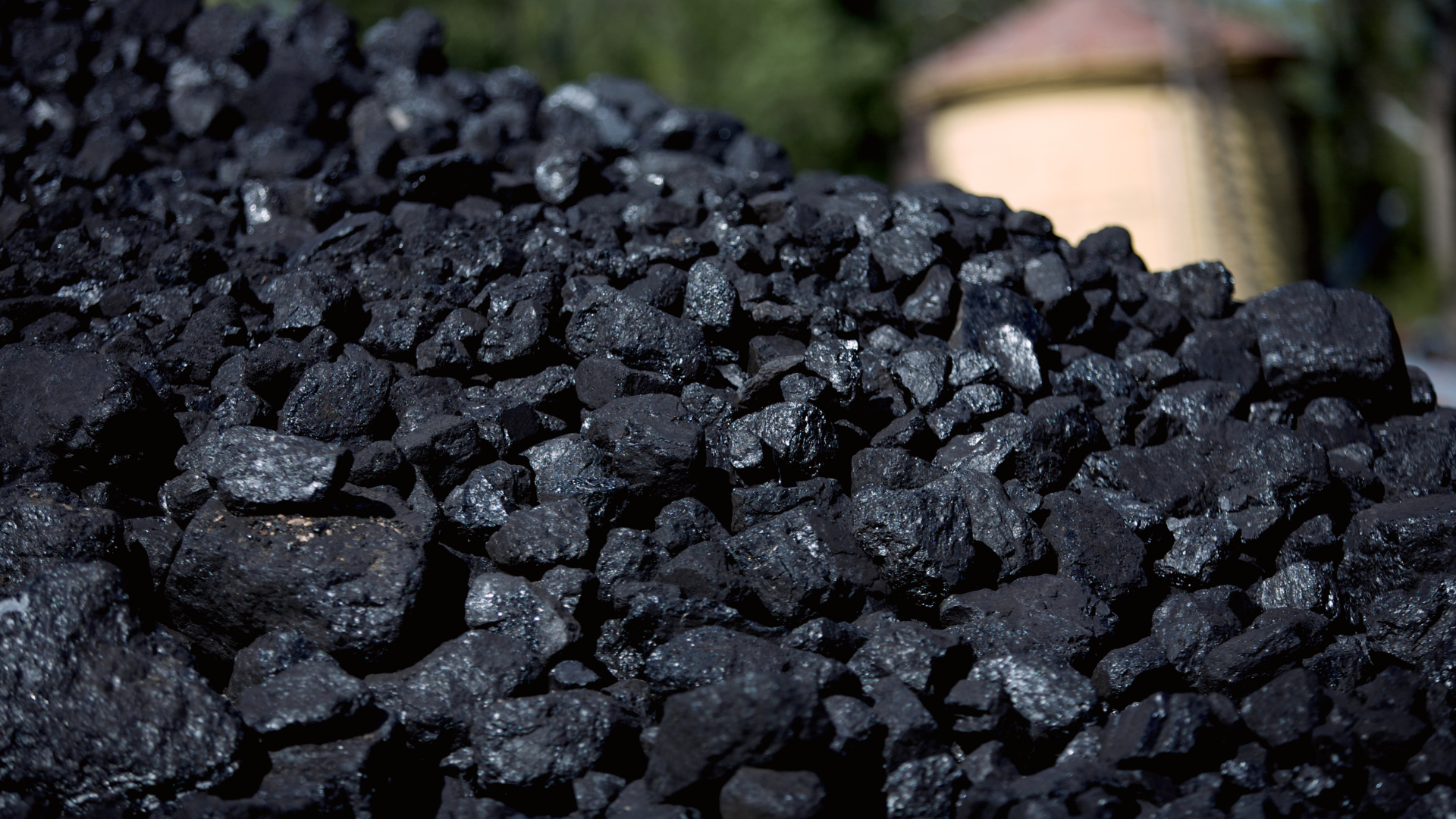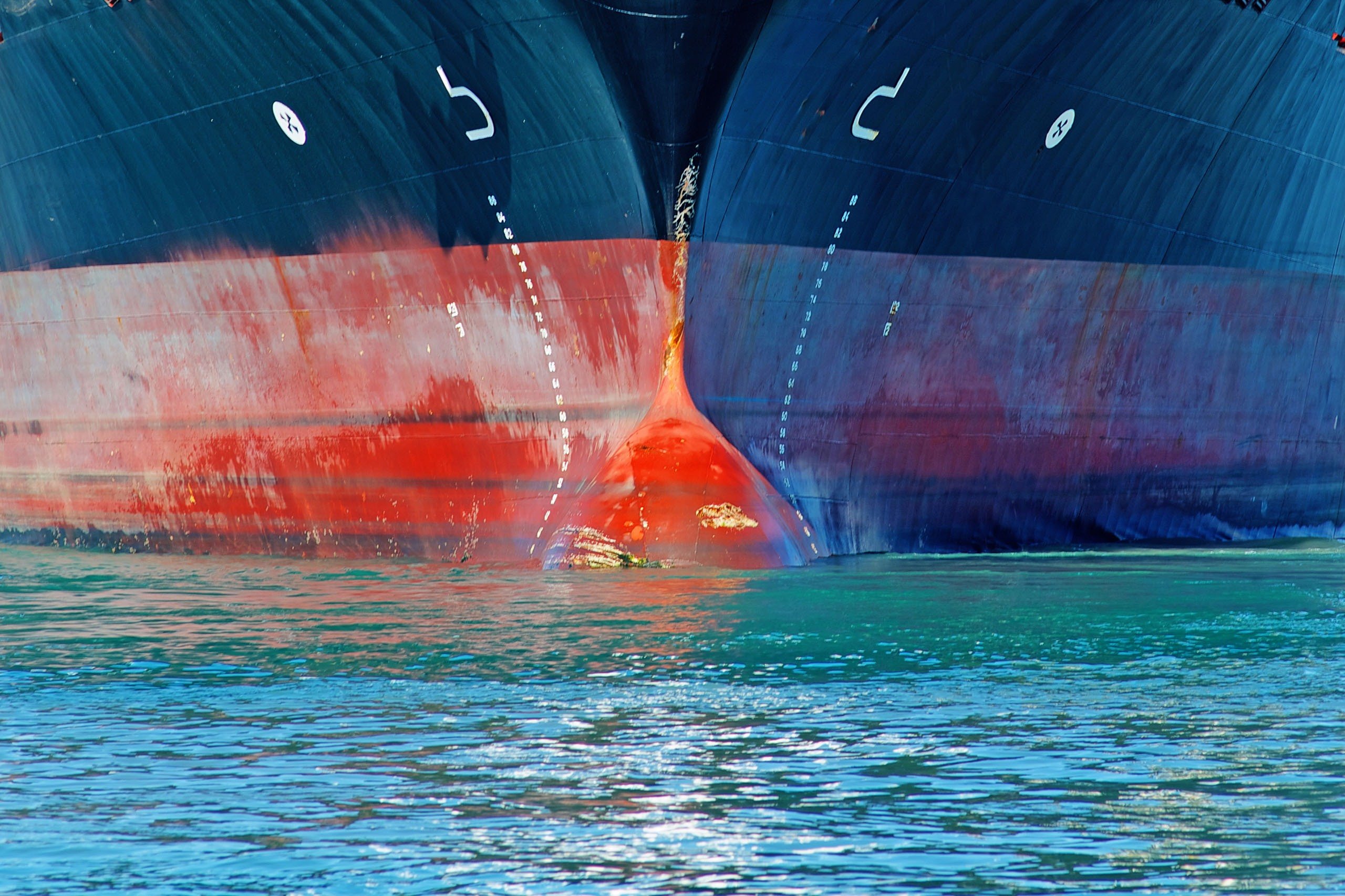
船上での炭素回収は、海運業界の脱炭素化において重要な役割を果たす可能性を秘めている技術です。しかし他の新技術と同様、その成否は次のような多くの要因に左右されます。それは技術的進歩(本船オペレーションや可能なスペースに適したシステムの開発)、商業的な実現可能性(炭素価格とともに代替燃料の入手可能性や価格)、供給状況、そして規制の状況などです。本稿ではUKクラブが新技術の概要および炭素回収・利用・貯蔵技術が海事分野でどのように応用できるかを説明いたします。
Executive Summary
Shipboard carbon capture is a technology that has the potential to play a significant role in maritime decarbonisation. However, as with other new technologies, its success will depend on a number of factors, including: technical advancements (to produce systems compatible with shipboard operations and available space); commercial feasibility (which will in turn be impacted by the availability and cost of alternative fuels, as well as the price of carbon); availability; and the regulatory landscape.
Land-based carbon capture projects have shown that the carbon-footprint reduction potential of such technologies could be significant, but the cost element is currently high. With further developments, there is a potential for it to be considered a viable option for the maritime sector.
In this article, the Club provides an overview of this emerging technology and evaluates how carbon capture, utilisation, and storage technologies might be applied in the maritime sector. We hope the Club’s members will find this article helpful in making informed decisions and developing business models based on their ship types, sizes, and trading patterns.
Please contact the author Akshat Arora, Senior Risk Assessor, if you have any questions regarding this article in particular, or the Club's Sustainability Director Patrick Ryan, if you have any questions regarding the Club's wider work in this area.
Introduction
As a part of establishing a path to net zero by or around 2050[1], there is increasing pressure on the maritime sector to minimize its greenhouse gas (GHG) emissions. These reduction targets are driving the industry to pursue various feasibility pathways for greener fuel options like ammonia and methanol. However, this energy transition may take decades. In the meantime, there has also been a growth in interest in various decarbonisation technologies and measures, like the use of carbon capture and storage on board vessels to reduce onboard operational carbon emissions.
Onboard Carbon Capture Utilisation and Storage (“OCCUS”) could assist in reducing the environmental impact by capturing carbon dioxide (CO2) emissions from ships before they are released into the atmosphere with exhaust gas. The captured CO2 emissions are then liquefied and transported away and stored deep underground or turned into value-added products.
Although this process has been used by other industries, it has not yet been widely adopted by the marine industry. This is due to the additional costs and space constraints that make it difficult to install the necessary equipment on board. However, technological developments and innovative design solutions could potentially overcome these challenges and make OCCUS a viable option for existing ships where conversion to zero-carbon fuels is cost-prohibitive and provides a route to extending the asset lifetime of these vessels.
Methods of capturing carbon
Carbon capture technology has been around for decades and is primarily used by land-based establishments. Among the several potential carbon-capturing technologies, the most successful approach for ship-based carbon capture is the application of the post-combustion method. This procedure entails cleaning exhaust gases before they are released, typically by installing equipment within or near the vessel exhaust stack.
The following measures are being considered by the shipping industry for post-combustion carbon capture. These can either be retrofitted on existing ships or integrated into new ship designs.
- Chemical absorption - This involves wet scrubbing of exhaust gas followed by the use of an absorber unit in which the chemical solvent (e.g., monoethanolamine (MEA), aqueous ammonia, or water-soluble amines) removes CO2. This solvent is then sent through a desorber, which separates CO2 from the solvent while also recovering the solvent for reuse. Such systems may require careful chemical handling consideration, e.g., solvents that need periodic replenishment or replacement may have specific requirements for the quantities or availability of extra solvent, used chemical residue treatment, and discharge protocols.
- Membrane separation – This process uses membranes as a physical filtration device to absorb contaminants such as CO2. Conventional membrane technology consists of filters suited to certain molecular sizes. Gaseous membrane CO2 filters are comprised of a semi-permeable fabric that allows certain molecules to pass through while preventing others from doing so. The presence of additional gases, such as NOx and SOx, as well as moisture, may reduce the effectiveness of these systems. Membrane filters may require frequent maintenance, treatment, or replacement.
- Cryogenic capture - It involves cooling exhaust gas to very low temperatures, which causes the CO2 to condense into a liquid that can be stored onboard in cryogenic storage tanks until the ship reaches port. The extreme temperatures required for cryogenic carbon capture necessitate interaction with other systems on board to optimize the heat exchange process.
- Solid sorbent adsorption - Sorbents can be used in dry scrubber systems to adsorb CO2 molecules from the exhaust gas. However, dry scrubbers are not commonly used in the marine industry, as wet scrubbers outperform them in terms of efficiency, cost, and maintenance requirements.
The effectiveness of purifying exhaust gas would typically depend on the type and capacity of the carbon capture system, chemicals used, fuel type, fuel consumption rate, and CO2 content in the exhaust gas. While it may not be possible to capture all carbon from the exhaust stream, it may be possible to capture higher percentages through more input energy and/or additional equipment. The selection of the system should therefore correspond with the emission reduction goal as well as the practicality of adding equipment, storage space, and supporting systems for onboard capture systems.
Captured carbon handling and storage onboard
In terms of storage and handling of captured carbon, liquefaction of CO2 on ships may be the most appropriate approach, taking into account space limitations as well as the convenience of handling liquid cargo.
The captured CO2 would need to be stored onboard as a liquid in pressurised and insulated tanks to maintain cryogenic conditions. This means that there could potentially be some compromise on the available cargo space on the ship.
Liquid CO2 has properties similar to liquefied petroleum gas (LPG). Pressurised tanks can manage liquid CO2 boil-off up to certain design pressures, after which pressure relief and boil-off gas reliquefication are commonly applied. The International Code for the Construction and Equipment of Ships Carrying Liquefied Gases in Bulk (IGC Code) specifies Type C liquefied gas tanks as the current standard for pressurised CO2 storage.
CO2 is less toxic when compared to hydrocarbon and is also not flammable. However, the purity of CO2 contained in Type C tanks would need to be carefully monitored, as impurities might cause corrosion in the storage system.
Ships would need to discharge the liquid CO2 to either shore reception facilities or an offtake CO2 tanker[2] for transfer to utilisation hub or facility where the captured CO2 can then be either used in the industry or injected back into the earth.
Ways of carbon utilization
The economic viability and scalability of carbon utilization technologies can vary depending on factors like the availability of low-cost carbon capture methods, the market demand for the end products, and the energy required for conversion processes. Here are some common ways of carbon utilization:
- Oil and gas industry: The process of injecting CO2 into existing oil fields is a well-known “enhanced oil recovery” (EOR) technique - the addition of CO2 increases the overall pressure of an oil reservoir, forcing the oil towards production wells. The CO2 can also blend with the oil, improving its mobility and allowing it to flow more easily. Some have even gone so far as to argue that such technology could be used to make the full lifecycle emissions intensity of oil carbon-neutral or even carbon-negative[3].
- Synthetic fuels: Similarly, captured carbon can be combined with hydrogen, which might itself be produced in a carbon efficient manner, such as by electrolysis powered by renewable energy, to create synthetic fuels like e-methanol[4] and sustainable aviation fuel[5] as low-carbon or even net-zero fuels that could be used to reduce the carbon footprint of the shipping and aviation sectors respectively.
- Construction industry: Carbon capture can be integrated into the production of building materials, such as concrete and aggregates.
- Carbonated beverages: Captured CO2 can be used in providing fizz in carbonated drinks.
- Agriculture and aquaculture: Captured CO2 can be used in controlled environments to enhance plant growth in agriculture or provide a source of carbon for aquaculture operations, which can lead to increased crop yields and more efficient food production. Captured carbon can also be used in the fertilizer industry for manufacturing urea.
- Algae cultivation: The captured CO2 can be used to stimulate the growth of algae, and that could assist in counteracting climate change as it can absorb CO2 faster than any other biomass. Algae can be for various purposes, including biofuel production, wastewater treatment, and as a source of protein in aquaculture.
Feasibility of carbon capture and storage on ships
Research is ongoing in many parts of the world - countries in Asia such as Japan, China, Korea, Saudi Arabia are taking the lead while a number of countries in the Europe, UK and the USA are also investing huge amounts of money in research and development. Several oil majors, such as Exxon, Saudi Aramco, Total and Shell are part of projects with other industry partners such as Mitsubishi, Stolt, Equinor, DNV in developing projects and studies. A couple of the notable studies and pilot projects are mentioned below for reference -
- In November 2021, Stena Bulk and OGCI (Oil and Gas Climate Initiative) conducted a combined study to analyse energy balances, fundamental physics, and integration problems on a medium-range (MR) oil/chemical tanker, a Suezmax crude oil tanker (both running on heavy fuel oil (HFO)), and an LNG carrier (fuelled by LNG).
The findings of the study showed that the LNG carrier offered the simplest and most straightforward path to a feasible carbon capture system because it uses an engine type that delivers sufficient waste heat in the exhaust gas, uses fuel with no impurities, and offers infrastructure on board that could be beneficial when liquifying and storing the captured CO2 through cryogenic carbon capture technology. However, a system that proved feasible on this type of ship may not be easily adapted to other ships.
The study's findings also indicate that carbon capture and storage on a large tanker is technically viable. The technology used for the Suezmax tanker was chemical absorption using monoethanolamine (MEA) to capture the carbon. The main challenge was the cost of installation and operation, with storage tanks, compressors, and other equipment requiring significant upfront capital expenditure (capex). According to the analysis, operating costs would also rise as a result of the energy necessary to operate the system effectively. However, the study discovered that these costs might be significantly reduced if the engine was adapted for compatibility with carbon capture and storage.
Typically, the costs would depend on the amount of carbon that is required to be captured and the opportunity for the ship to be able to discharge the captured liquid CO2 to a reception facility. The study concluded that these costs were likely to be a hurdle to the deployment of this system in the near and medium term, but that as the technology improves and becomes cheaper to operate, it could become a viable option for the industry’s decarbonization pathway. - In July 2023, a ship-based carbon capture (SBCC) prototype developed under the EverLoNG project (led by the Dutch research and development organization TNO) was installed on an LNG-powered LNG carrier owned by Total Energies. The objective is to achieve a 70% reduction in CO2 emissions from ships, taking the same ship running on LNG but not equipped with SBCC as the reference case.
Furthermore, a pivotal facet of the project revolves around enhancing the cost-effectiveness of SBCC. The target is to drive down the expenses associated with onboard carbon capture and storage to below 100 €/ton for initial implementations by the year 2025, and an even more cost-efficient 50 €/ton for subsequent implementations. - A key element missing from these analyses is the port-side infrastructure necessary to offload and process the captured CO2. Although some ports and locations are equipped to handle CO2 shipments for industrial use and large-scale recycling and sequestration operations, most ports are not set up to manage this process.
As a result, joint ventures such as the Northern Lights, a tie-up between Equinor, Shell and TotalEnergies, are building ships capable of transporting the captured and liquefied CO2 from several emitters to an onshore storage terminal on the Norwegian west coast. From there, the liquefied CO2 will be transported by pipeline to an offshore storage location subsea in the North Sea, for permanent storage. According to their recent announcement, three dedicated CO2 carriers, each with a cargo size of 7,500 m3 and a length of 130 m are being built in Dalian, China. The first two ships are scheduled to be delivered in 2024 and will be operated by K-Line on behalf of Northern Lights.
Similarly, Ecolog is looking to develop specialised liquid CO2 carriers between the range of 20,000 m3 and 84,000 m3; and Mitsui O.S.K. Lines (MOL) and the Kansai Electric Power Co. (KEPCO) have signed a Memorandum of Understanding (MoU) to study marine transportation for the development of a CO2 capture and storage (CCS) value chain. More recently, based on the study done by Rystad Energy, 55 vessels will be required by 2030 for the emerging CO2 transport and storage.
Given that liquefied CO2 transportation is still in its early phases, the industry is highly unstandardized. Each project is unique, and a variety of vessel sizes and types are proposed. The International Maritime Organisation (IMO) recognises this gap, and during the recent MEPC-80 meeting (3-7 July 2023) it was agreed to review and consider a way forward to potentially accommodate onboard CO2 capture within IMO's regulatory framework.
GCMD Study on Offloading, Onboard Captured Carbon Dioxide
A recent study commissioned by the Global Centre for Maritime Decarbonisation (GCMD), published findings on offloading captured carbon dioxide from vessels. Some of their key findings include:
-
Key offloading concepts: The study identified that storage, transport, and offloading of captured CO2 is most efficient and cost-effective in its dense, liquid form. Ship-to-ship and ship-to-shore transfer using an intermediate liquid CO2 receiving vessel are the most scalable concepts, especially for sequestration or synthetic fuel production.
-
Regulatory and policy landscape: The policy and regulatory landscape for offloading captured LCO2 from ships is still under development. The study provides an overview of the regulatory and policy frameworks of several countries related to CCS.
-
Low port readiness: The industry for captured CO2 is still in its early stages. Planned Liquefied CO2 (LCO2) end-use and sequestration-related infrastructure projects are still in the concept phase and have not reached the Final Investment Decision (FID) stage. This delays ports from investing in infrastructure to enable offloading of onboard captured CO2.
-
Safe handling of LCO2: Safety studies show that the operational risks of offloading captured and liquefied CO2 are below the health risk criteria for crew and operators, paving the way for a pilot to demonstrate OCCS as a decarbonisation solution for shipping.
To access the full study findings, please download the report here.
Conclusion
OCCUS is technically feasible, but it may require significant additional capital expenses and some compromise on cargo space. The system is energy-intensive and the annual operating costs for the ships will go up considerably depending on the amount of carbon they capture. The regulations and technologies are still developing but the various pilot projects should provide an opportunity to assess the technical feasibility and to help assess the economic feasibility.
The UK Club is committed to supporting its Members in their transition to alternative fuels and technologies. Further guidance regarding the decarbonisation of shipping can be found in the Club's Decarbonisation Roadmap and in various other articles published on the Club's website.
Please contact the author Akshat Arora, Senior Risk Assessor, if you have any questions regarding this article in particular, or the Club's Sustainability Director Patrick Ryan, if you have any questions regarding the Club's wider work in this area.
---
[1] MEPC-80 (3-7 July 2023) adopted 2023 revised IMO GHG Strategy. Read here - https://www.ukpandi.com/news-and-resources/articles/2023/mepc-80-a-summary/
[2] Clarksons has reported that dedicated CO2 carriers are being built, with tanks capable of withstanding up to 20 bar pressure and -80C temperature.
[5] Source: https://takeoff-project.eu/





